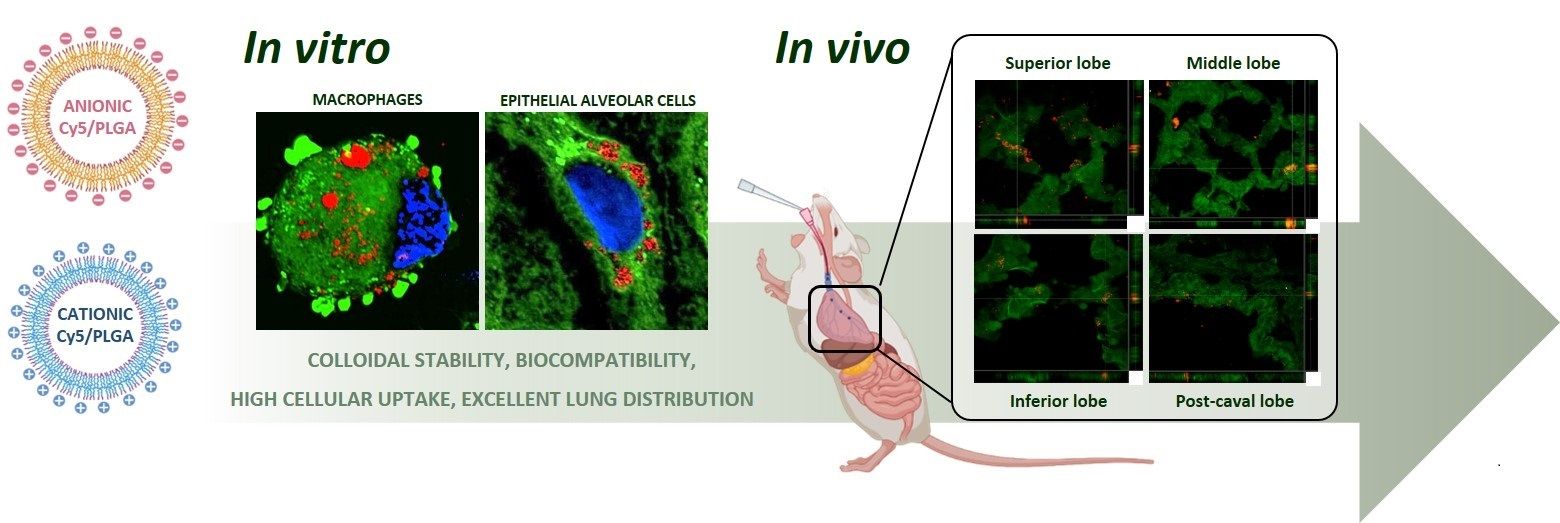
Hot off the press: New paper in Pharmaceutics Journal!
The paper “Fluorescent PLGA Nanocarriers for Pulmonary Administration: Influence of the Surface Charge” was published in Pharmaceutics Journal!
NN group member Anna Solé Porta and our former members Wid Mekseriwattana, Ariana Roldán and Andrea Stephany have written this publication under the supervision of Anna Roig and in collaboration with the Institut d’Investigació i Innovació Parc Taulí (I3PT), CIBERES and IIBB – CSIC. An invitro and invivo evaluation of PLGA nanocarriers that interact with macrophages in the lung.
Abstract:
Nearly four million yearly deaths can be attributed to respiratory diseases, prompting a huge worldwide health emergency. Additionally, the COVID-19 pandemic’s death toll has surpassed six million, significantly increasing respiratory disease morbidity and mortality rates. Despite recent advances, it is still challenging for many drugs to be homogeneously distributed throughout the lungs, and specifically to reach the lower respiratory tract with an accurate sustained dose and minimal systemic side effects. Engineered nanocarriers can provide increased therapeutic efficacy while lessening potential biochemical adverse reactions. Poly(lactic-co-glycolic acid) (PLGA), a biodegradable polymer, has attracted significant interest as an inhalable drug delivery system. However, the influence of the nanocarrier surface charge and its intratracheal instillation has not been addressed so far. In this study, we fabricated red fluorescent PLGA nanocapsules (NCs)—Cy5/PLGA—with either positive (Cy5/PLGA+) or negative surface charge (Cy5/PLGA-). We report here on their excellent colloidal stability in culture and biological media, and after cryo-storage. Their lack of cytotoxicity in two relevant lung cell types, even for concentrations as high as 10 mg/mL, is also reported. More importantly, differences in the NCs’ cell uptake rates and internalization capacity were identified. The uptake of the anionic system was faster and in much higher amounts—10-fold and 2.5-fold in macrophages and epithelial alveolar cells, respectively. The in vivo study demonstrated that anionic PLGA NCs were retained in all lung lobules after 1 h of being intratracheally instilled, and were found to accumulate in lung macrophages after 24 h, making those nanocarriers especially suitable as a pulmonary immunomodulatory delivery system with a marked translational character.
Andrea Stephany, Anna Roig, Anna Solé Porta, Ariana Roldán, PLGA nanocarriers, Surface Charge, Wid Mekseriwattana

